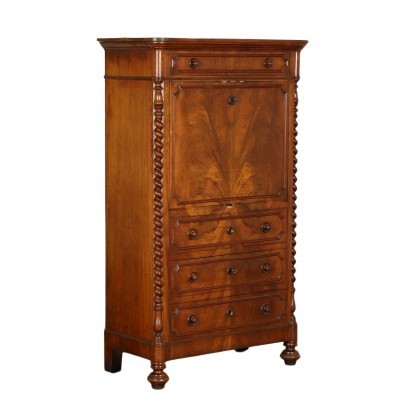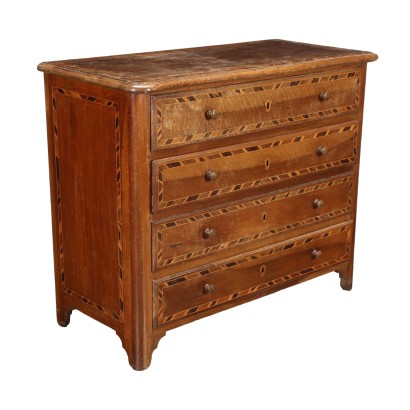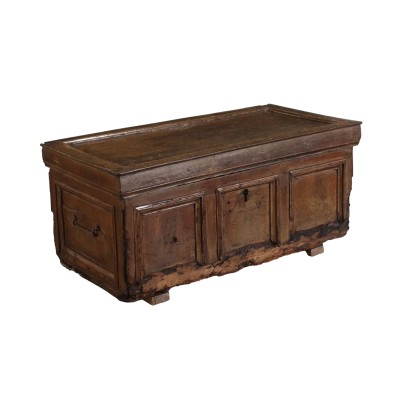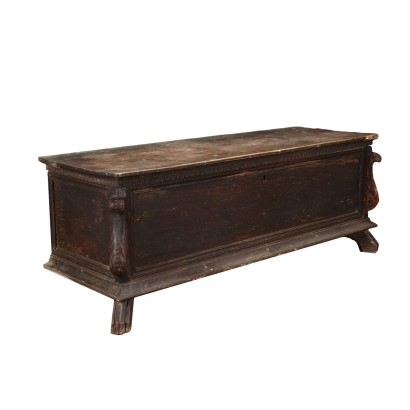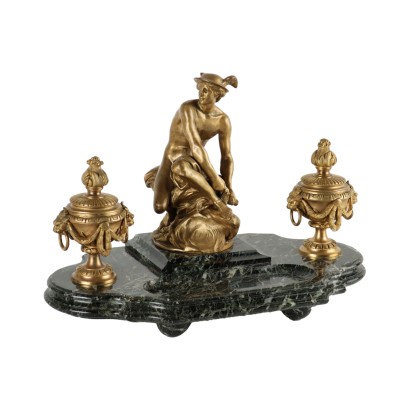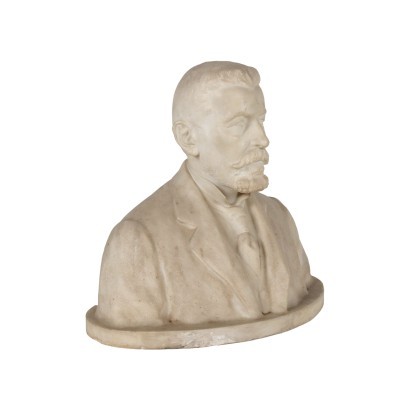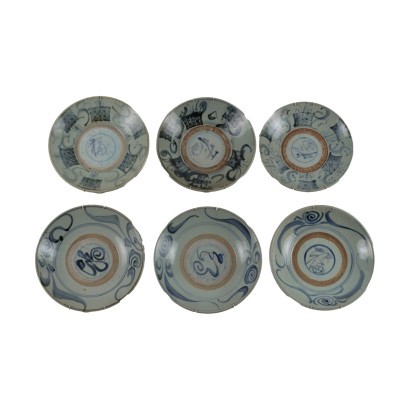Secrétaire Umbertino Piemontese
Features
Style: Umbertino (1870-1900)
Age: 19th Century / 1801 - 1900
Origin: Piemonte, Italy
Description
Umbertine Piedmontese secrétaire supported by feet of which the front ones are a spinning top, on the front it has three drawers, the last of which is fake, to house the lower compartment of the safe located in the cabinet hidden behind the flap door; the cabinet also has several compartments and a drawstring door that needs restoration. The uprights are carved in the shape of twisted semi-columns, to support the undertop band, in which there is another drawer. Veneered in walnut and walnut feather, the drawers and the door are decorated with frames; the interiors are in cherry.
Product Condition:
Product in fair condition showing some signs of wear.
Dimensions (cm):
Height: 151
Width: 88
Depth: 45
Additional Information
Style: Umbertino (1870-1900)
The name of this style is due to the ruler of the time Umberto I, appointed King of the Kingdom of Italy on 9 January 1878 and assassinated on 9 July 1900.The Umbertino style is typically Italian and belongs to that Eclectic period that characterized the second half of the 19th century, which lasted just under twenty years, the Umbertino style spread around 1880 and ended around 1895 when a new style called Liberty and universally known took over. like Art-Nouveau to be followed by Art-Decò.
In this style, mainly eclectic and monumental, Gothic and Baroque elements originally belonging to the Renaissance but also adorned with large masks, frames and decorations were re-proposed in the furniture, from the bedside table to the large wardrobe or sideboard.
Find out more about the Umbertine style with our insights:
An Umbertine secretary dedicated to Dante Alighieri
A comparison between a Luigi Filippo console and an Umbertina one
Age: 19th Century / 1801 - 1900
19th Century / 1801 - 1900Main essence:
Cherry
Obtained from prunus cerasus , a plant of oriental origin, it is a hard wood with a light and delicate color, with a reddish vein. Due to its diffusion and availability it was used in Europe in popular furniture. In cabinet making, in the seventeenth century, it was widely used in France and England for inlay work. In Italy it was very successful in Lucca. It was also very popular in the United States for the manufacture, from the late 1600s, of commonly used furniture.The dictionary of antiques: Eclecticism
Classic Monday: a sofa from the 1800s example of eclecticism



